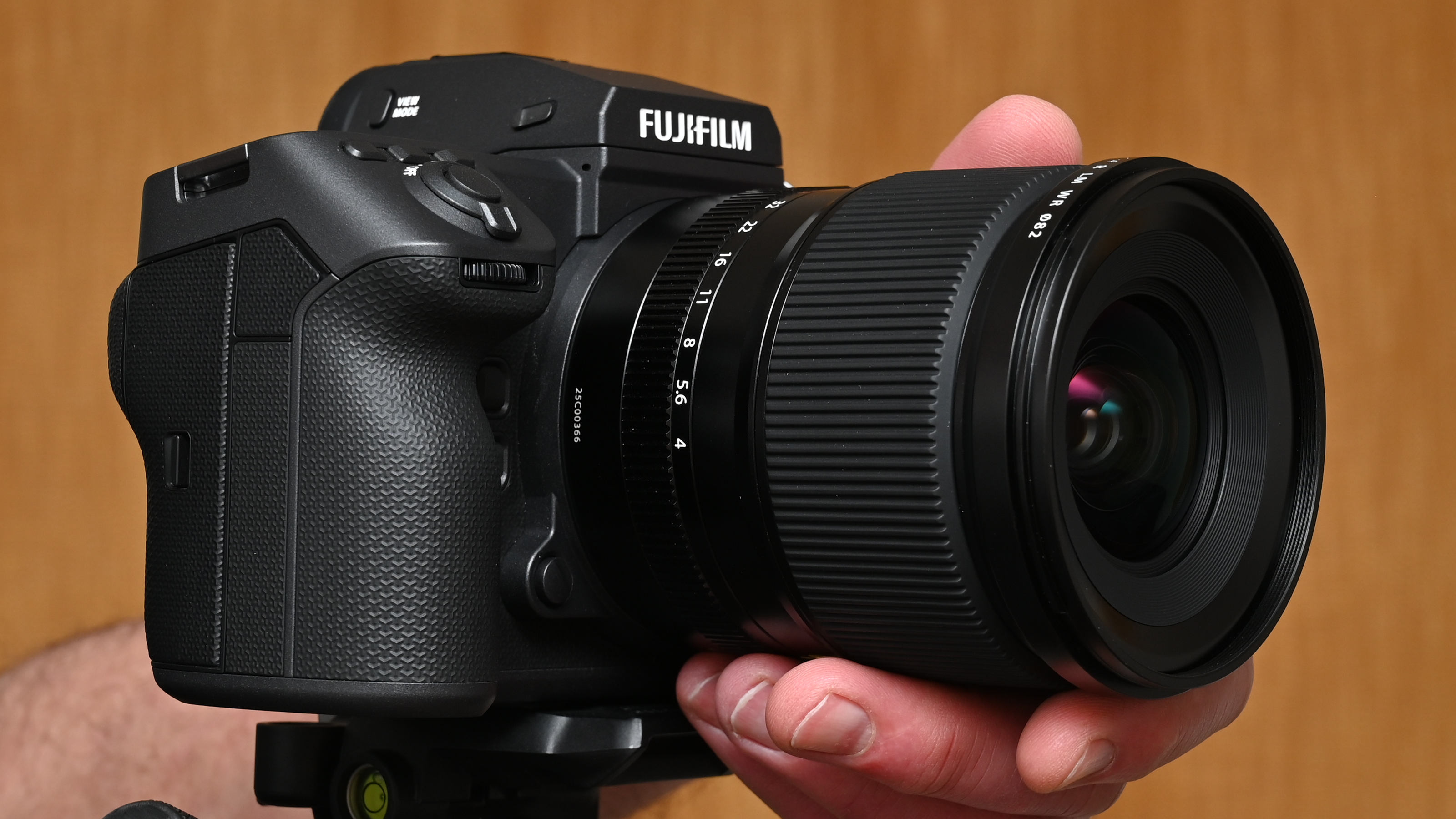
I’ve been really impressed by Fujifilm’s range of GF lenses and this one is currently the most wide-angle prime in the line-up. As a fully pro-grade optic, it’s designed to be one of the best Fujifilm GF lenses, aiming to make the most of what the best Fujifilm cameras have to offer, up to and including the mighty 102 megapixel GFX 100 II. For the uninitiated, or at least for those of us more used to shooting with full-frame camera systems, the GF 23mm gives a wider perspective than you might think, with a viewing angle of about 100 degrees. That equates to using an 18mm lens on a full-frame camera. Even so, it’s not quite as wide as the Fujifilm GF 20-35mm F4 R WR zoom lens, which has an equivalent range of 16-28mm in full-frame terms, giving a maximum viewing angle of 108 degrees with the same f/4 aperture rating.
The GF 23mm is ideal for landscapes, cityscapes, architectural interiors and simply any time you need to squeeze a lot into the image frame. It’s equally adept at exaggerating the perspective between close foreground and background areas, for creative effect, where its short 38cm minimum focus distance comes in useful. The lens is less ideal for astrophotography, for which the f/4 aperture is a bit on the slow side.
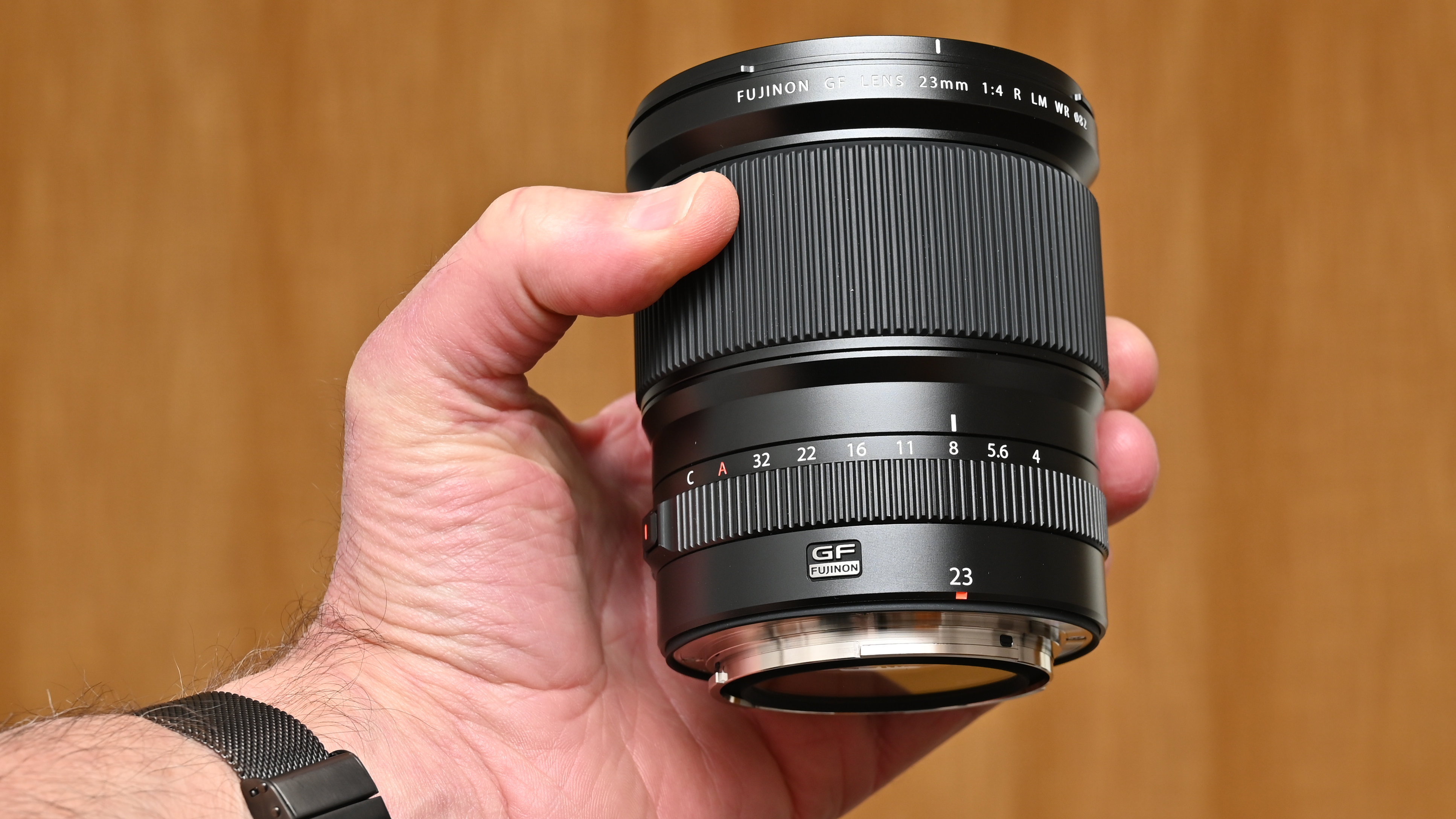
Fujifilm GF 23mm F4 R LM WR: Specifications
Fujifilm GF 23mm F4 R LM WR: Price & Availability
Available around the globe from Fujifilm stockists, the GF 23mm costs around $2,599/£2,389. That’s undeniably expensive but it’s what I’d expect to pay for one of Fujifilm’s top-flight medium format lenses. For the sake of comparison, it costs about the same as the Fujifilm GF 20-35mm F4 R WR zoom lens, which is actually a little lighter in weight at 725g compared with 845g. Both lenses have the same 82mm filter attachment thread.
Fujifilm GF 23mm F4 R LM WR: Design & Handling
I’ve reviewed a few Fujifilm GF lenses in the past, so the consistent design ethos and handling across the range make the GF 23mm feel like being reacquainted with an old friend. I like the aperture control ring, which operates in one-third f/stop click steps throughout its range of f/4 to f/32 and comes complete with A and C positions. These are for Auto (the aperture value is set by the camera body automatically) and Command (the aperture is set by the camera’s command dial). Even better, I like that the lens features an aperture ring lock release button, avoiding the risk of nudging it from it’s A and C positions accidentally while shooting. The only fly in the ointment for videographers is that there’s no de-click option for the aperture ring. The aperture diaphragm itself is based on nine curved blades and is pretty well-rounded.
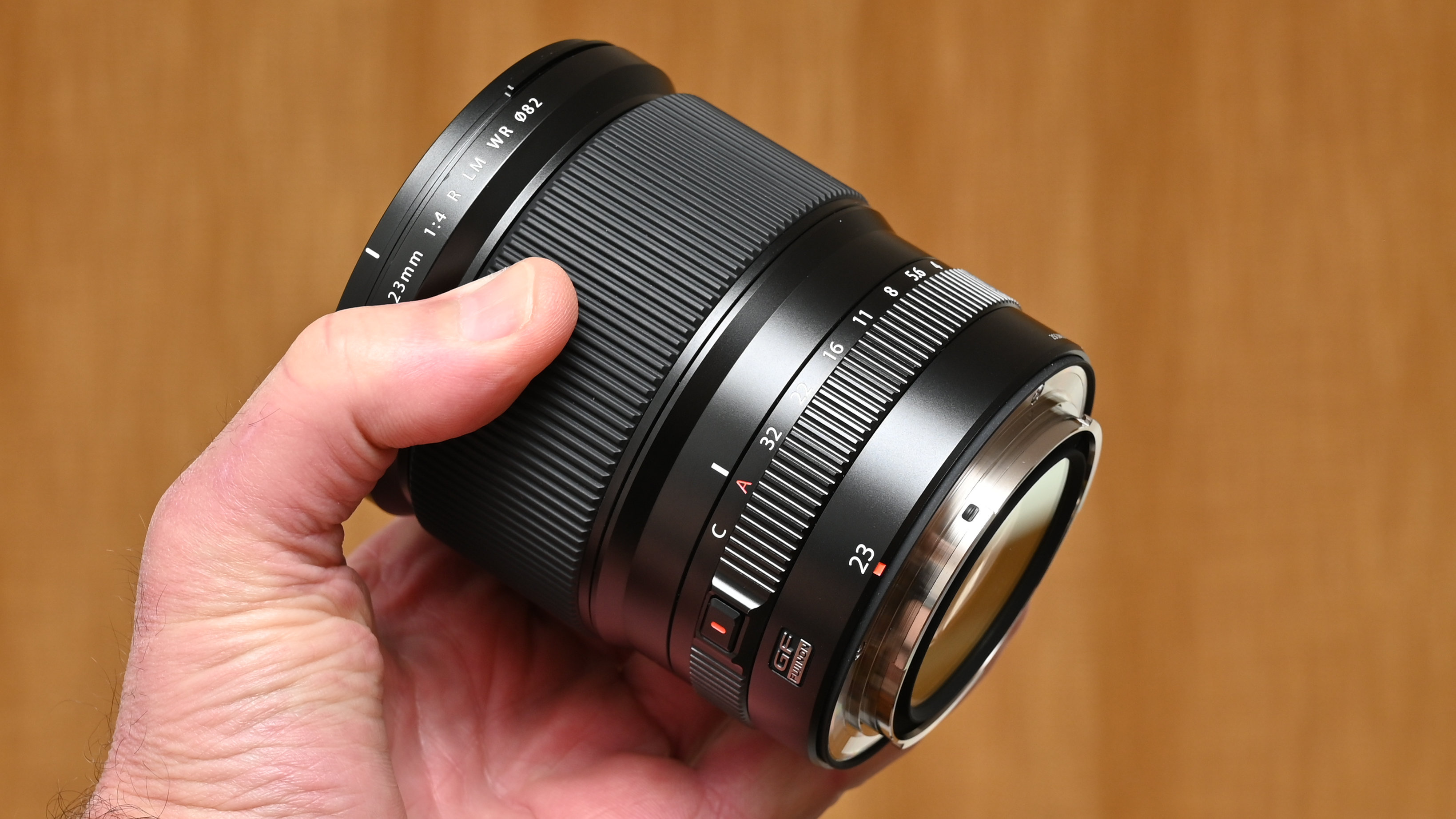
The GF 23mm is typically chunky for a medium format lens but feels well balanced and an entirely natural fit for GFX camera bodies. Even so, it’s one of the heavier lenses in the line-up and packs a lot of glass. The total count of 15 elements in the optical path is more than most and includes specialist items with two aspherical elements, three ED (Extra-low Dispersion) elements and one Super ED element. The overall aim is to deliver excellent sharpness and clarity with the minimum of aberrations like color fringing and distortion. Ghosting and flare can often be a problem when shooting with an ultra-wide-angle lens, due to the large field of view capturing lots of stray light. The GF 23mm features high-tech Nano GI coating in a bid to keep ghosting and flare to a minimum.
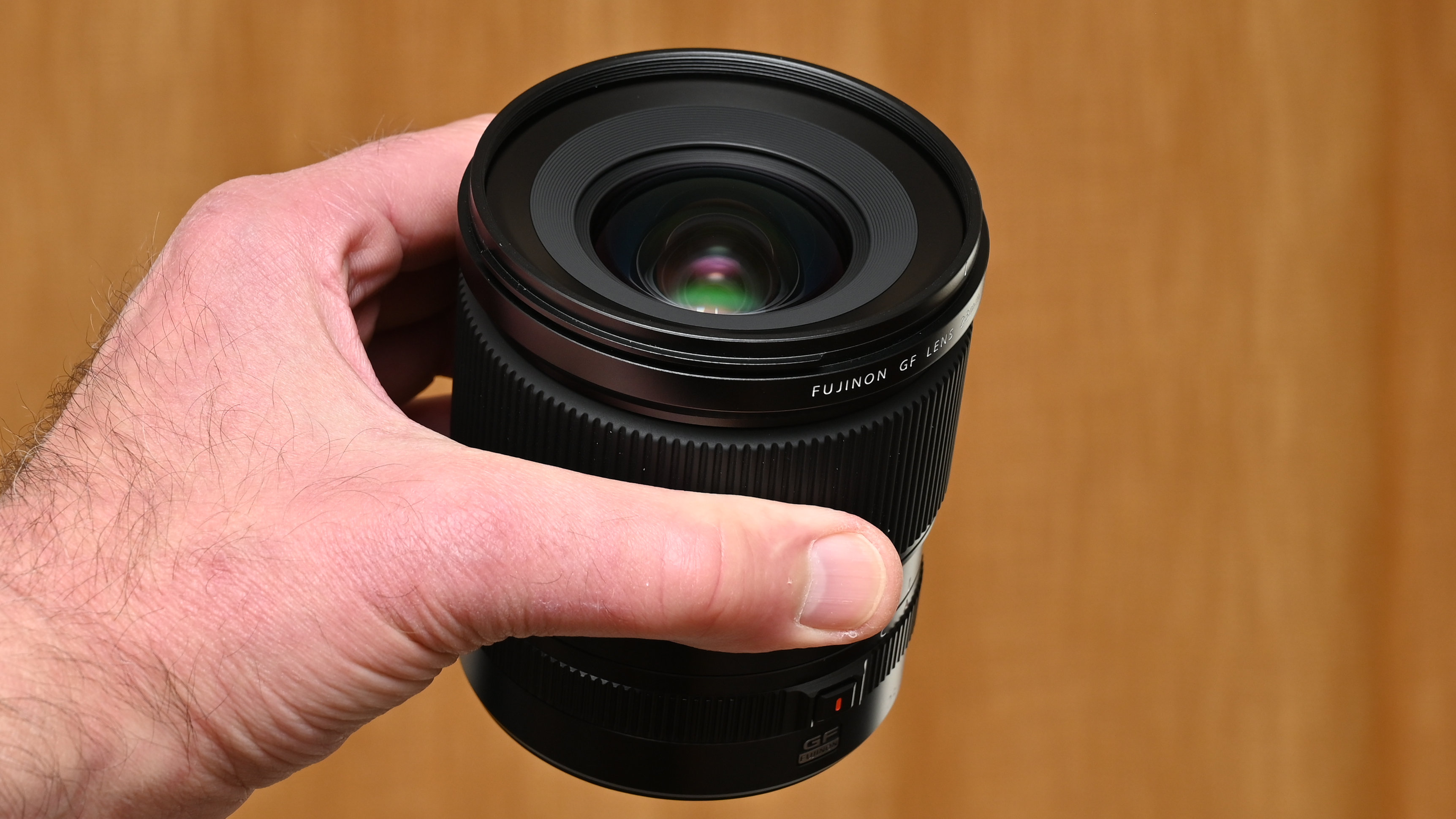
I’ve been continually impressed by the build quality of Fujifilm’s GF lenses. This one follows suit with a really solid, durable feel to its construction. Typically, it features extensive weather-seals and is rated for use down to temperatures of -10C (14F). I have little doubt that you could use the lens in even colder conditions if you felt the need.
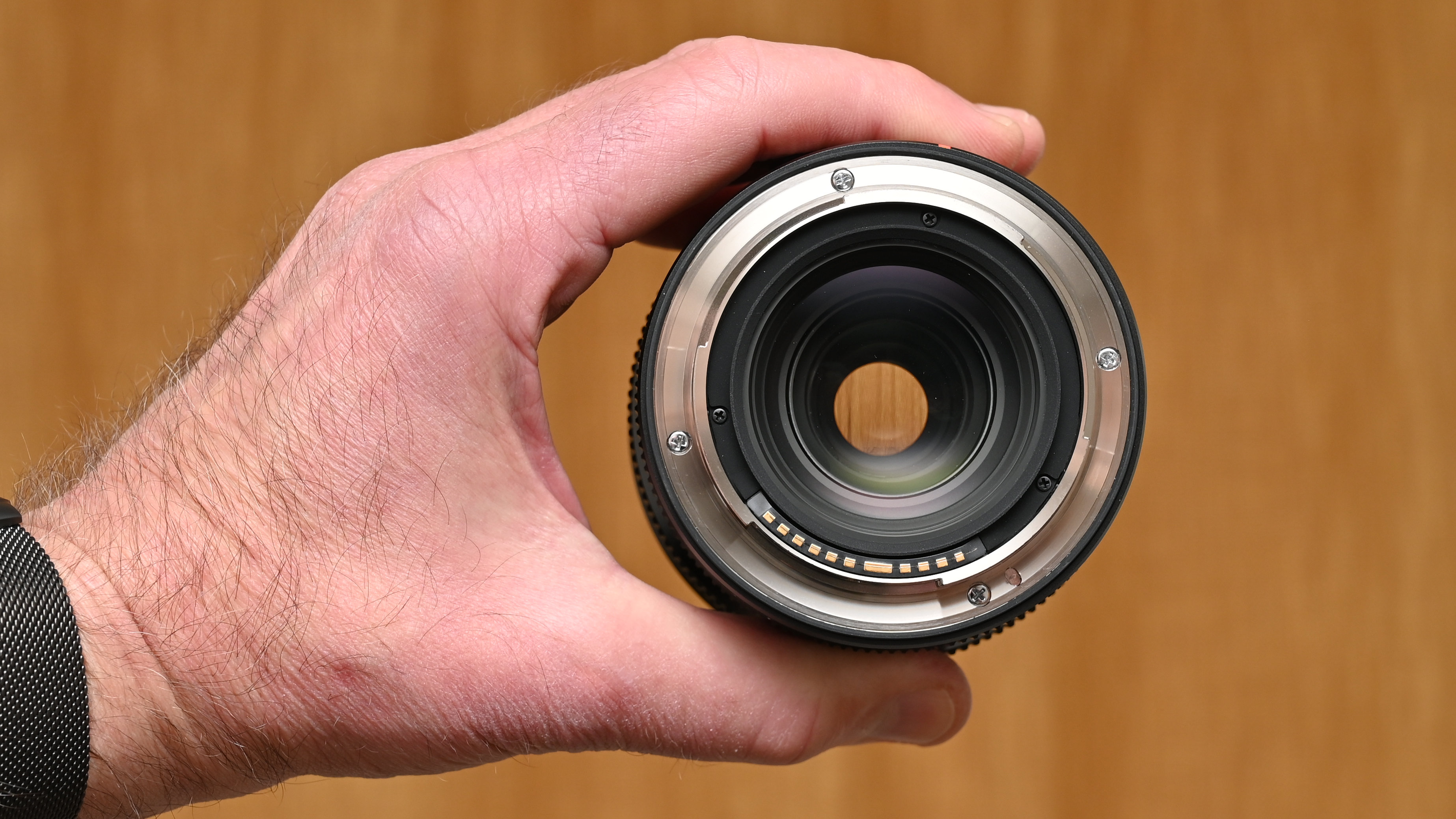
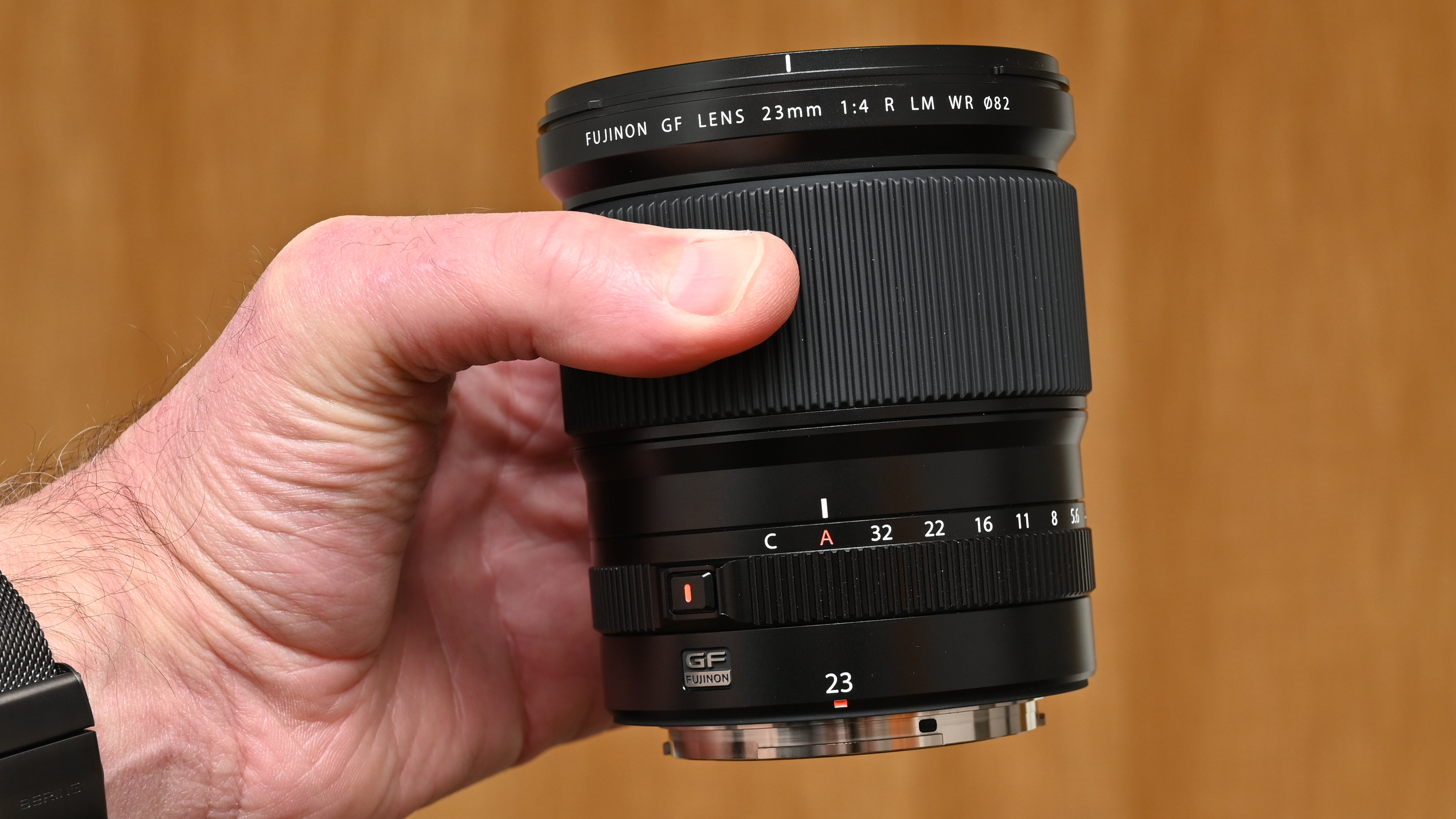
Fujifilm GF 23mm F4 R LM WR: Photo Performance
I found autofocus to be super-speedy and highly accurate, well able to track the action of moving subjects. I like that the minimum focus distance of 38cm (just over 10 inches from the front of the lens) lets me get really close to subjects and exaggerate perspective. At close focusing distances, the f/4 aperture also delivers a fairly tight depth of field, and the quality of bokeh is nice and smooth. For landscape photography, the ability to add filters via the 82mm front attachment thread is a bonus, whereas many ultra-wide-angle lenses have an integral hood that precludes this.

Testing the lens with the 102 megapixel Fujifilm GFX 100 II, I found that GF 23mm was easily sharp enough to do full justice to the enormous resolving power of the camera body. Let’s not forget that this is a seriously wide-angle lens, equivalent to using an 18mm lens on a full-frame camera. Our lab tests based on shooting standard sized charts at necessarily short range is a particular challenge for wide-angle lenses, but the GF 23mm came through with flying colors. In real-world shooting, I found it to be supremely sharp, right out to the extreme edges and corners of the image frame. Further plus points include negligible color fringing, minimal distortion and excellent resistance to ghosting and flare. Ultimately, the GF 23mm is a top performer in all respects.

Fujifilm GF 23mm F4 R LM WR: Sample Images
This gallery of sample images was taken in the city of Bath and demonstrates the lens’s wide field of view, along with its superb image quality.



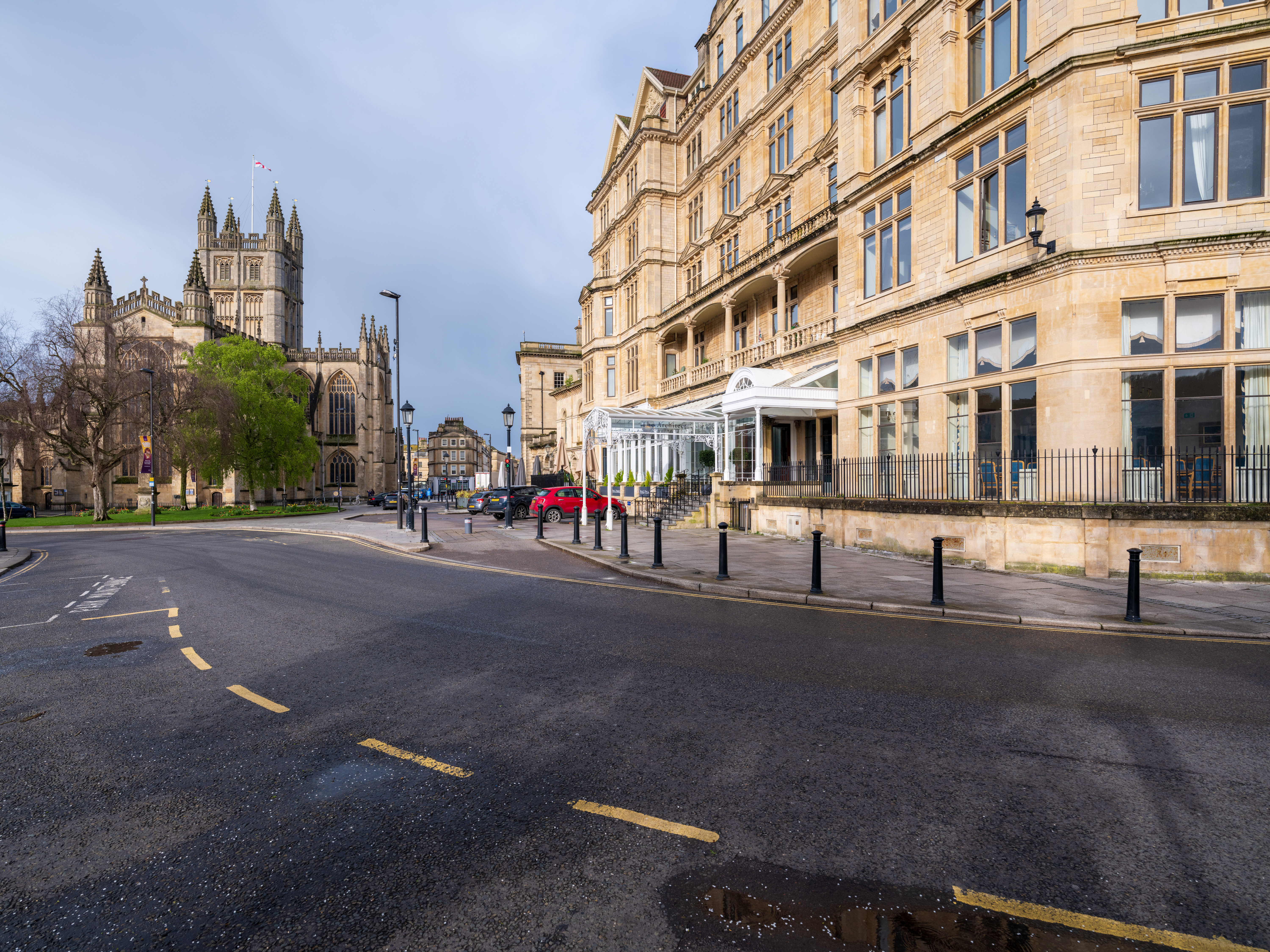



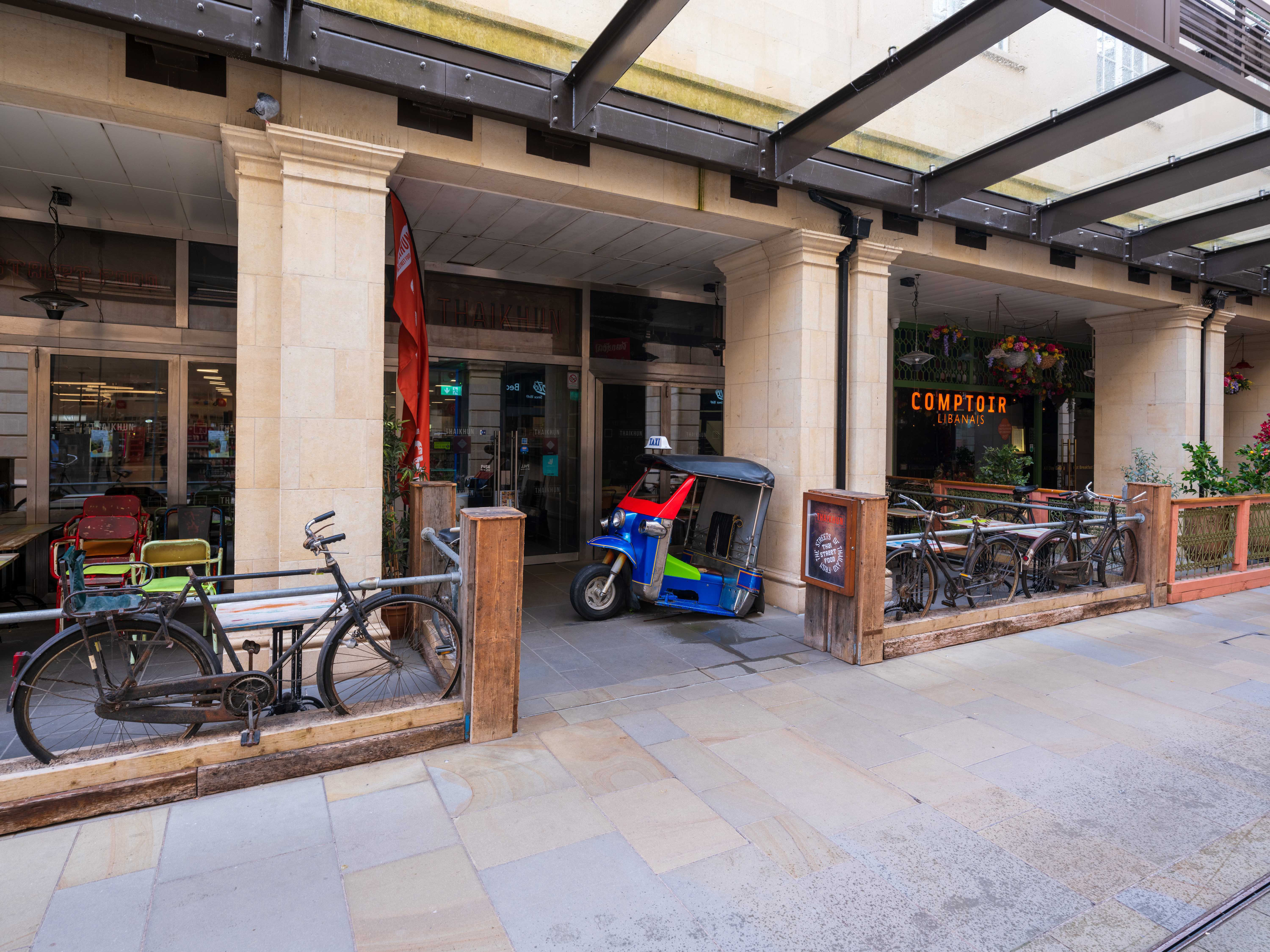

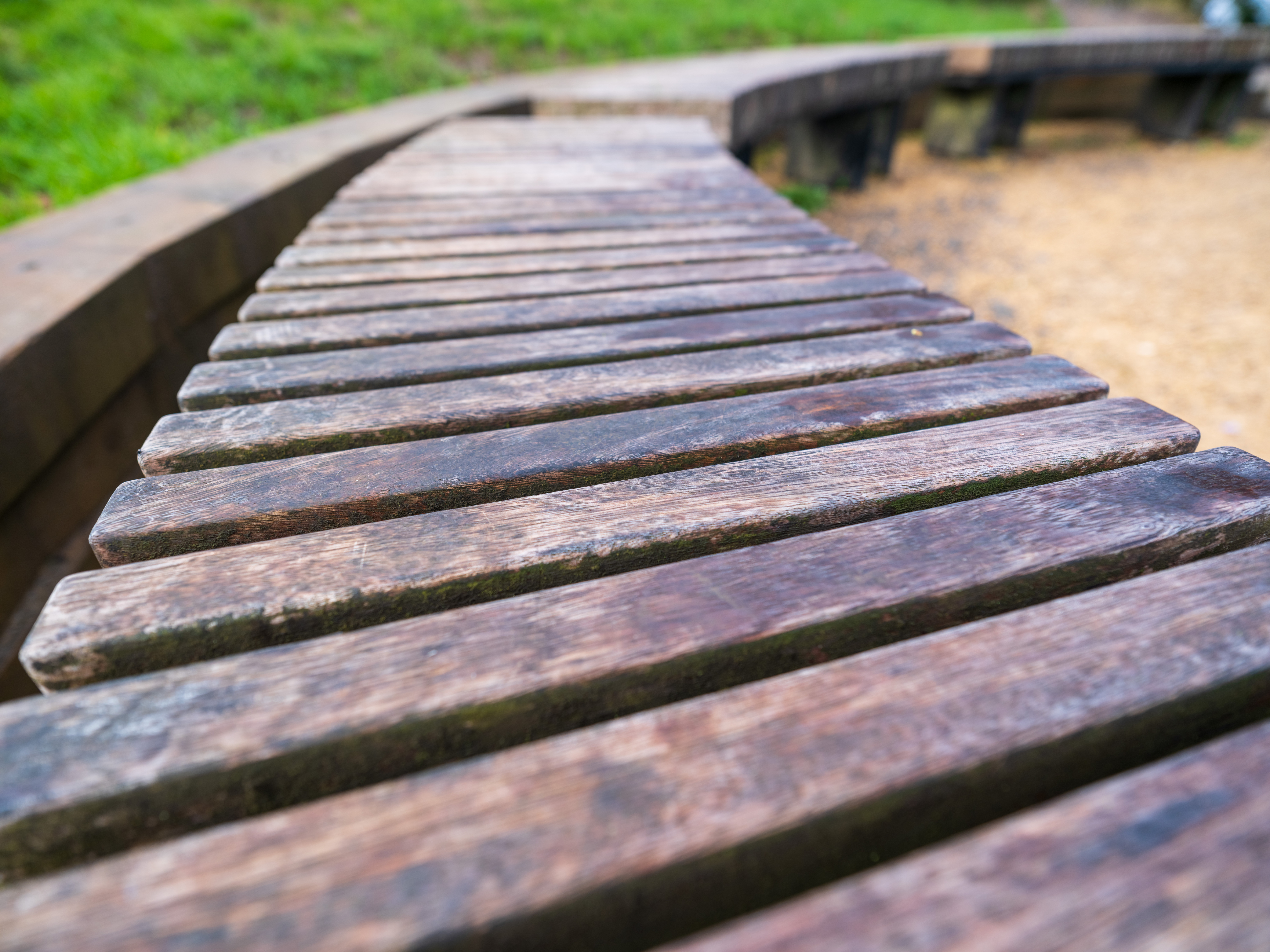
Fujifilm GF 23mm F4 R LM WR: Lab Results
We run a range of lab tests under controlled conditions, using the Imatest Master testing suite. Photos of test charts are taken across the range of apertures and zooms (where available), then analyzed for sharpness, distortion and chromatic aberrations.
We use Imatest SFR (spatial frequency response) charts and analysis software to plot lens resolution at the center of the image frame, corners and mid-point distances, across the range of aperture settings and, with zoom lenses, at four different focal lengths. The tests also measure distortion and color fringing (chromatic aberration).
Sharpness:
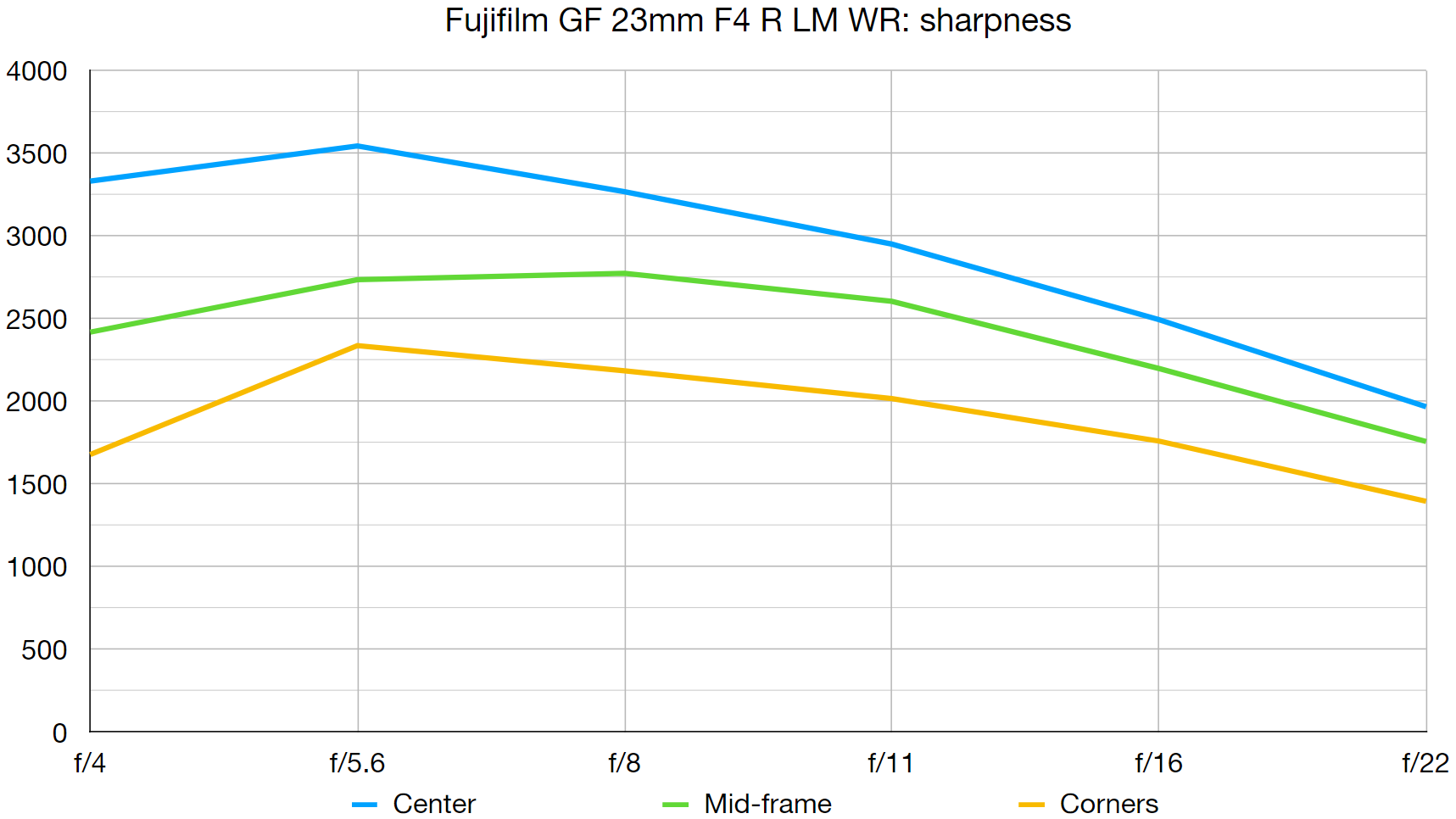
We’re used to seeing fairly mediocre edge/corner sharpness when testing very wide-angle lenses, mostly due to the need to shoot standard sized test charts at very close range. Even so, the GF 23mm delivered supreme sharpness in our lab tests, right across the entire image frame.
Fringing:
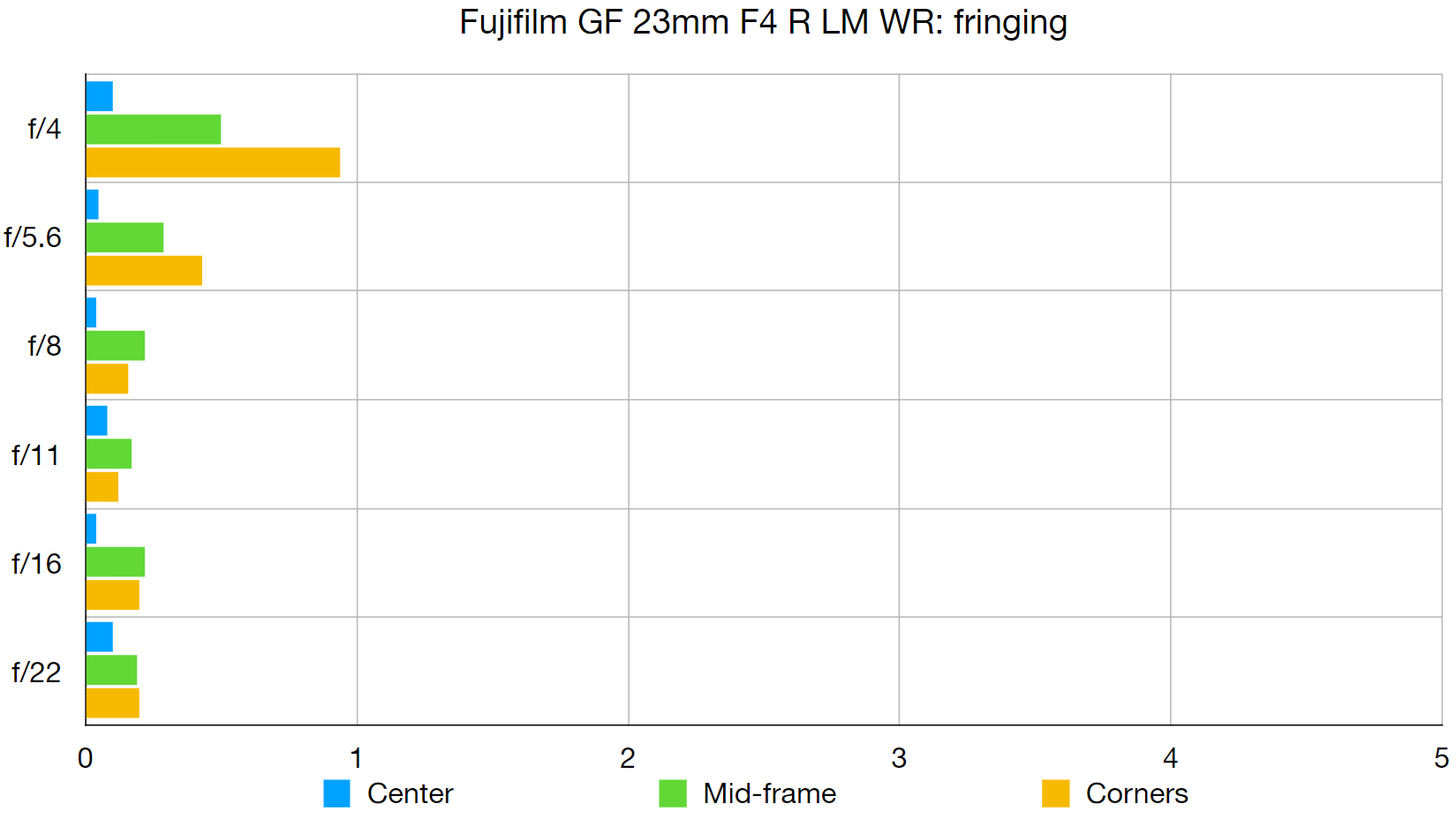
There’s the merest hint of color fringing towards the edges and corners of the frame when shooting wide-open at f/4 but it’s barely noticeable at apertures of f/5.6 and narrower.
Distortion: -0.96
The GF 23mm produces very mild barrel distortion but it generally goes unnoticed in real-world images.
Fujifilm GF 23mm F4 R LM WR: Verdict
My wish list of Fujifilm GF lenses far exceeds the contents of my bank account. Pricey as it is though, the GF 23mm is very much at the top end of that list. Image quality and all-round performance are exceptional, build quality is excellent and handling is superb. Sure, it lacks the versatility of a zoom lens and the f/4 aperture rating makes it less than ideal for astrophotography, but it’s a terrific wide-angle prime for landscape and architectural photography, and much more besides. I love it.

Should you buy the Fujifilm GF 23mm F4 R LM WR?
✅ Buy this...
- Expansive 99.9-degree viewing angle
- Fabulous image quality
- Tough weather-sealed build quality
🚫 Don't buy this...
- f/4 aperture is slow for astrophotography
- Lacks versatility of the GF 20-32mm zoom
- No aperture ring de-click option for video







